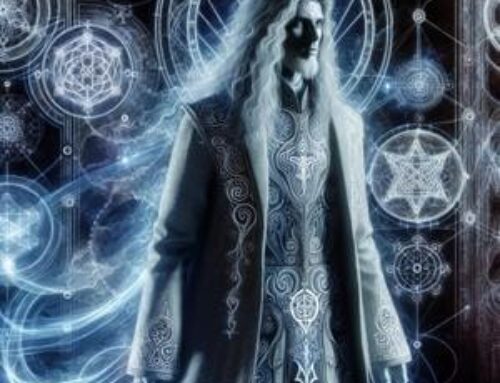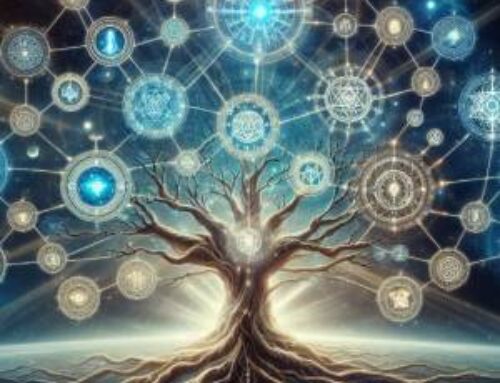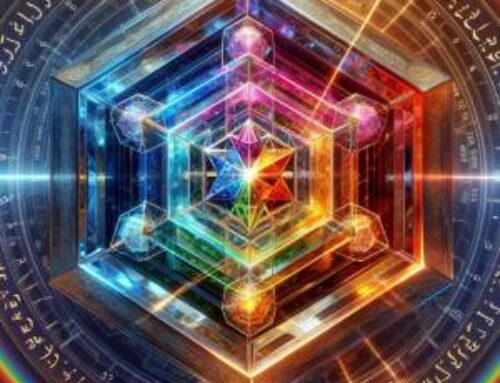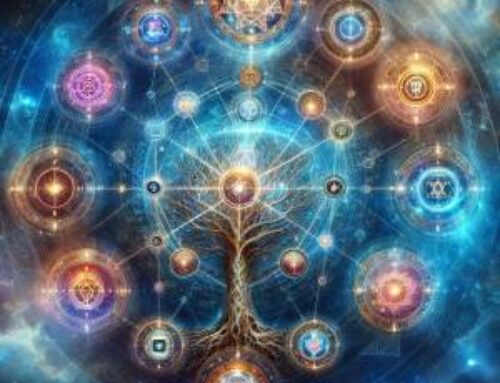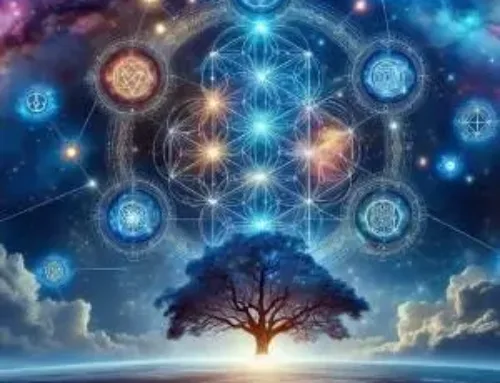Contents
- 1 Introduction to Kabbalah and Catholicism
- 2 Tracing the Spiritual Lineages
- 3 Unveiling Core Spiritual Doctrines
- 4 Paths to Mystical Enlightenment
- 5 Conclusion
- 6 FAQ – Kabbalah and Catholicism
- 6.1 1. What are the profound distinctions between Kabbalah and Catholicism?
- 6.2 2. How do Kabbalah and Catholicism perceive sin and the path to redemption?
- 6.3 3. Is it feasible to follow Kabbalah whilst devoutly practicing Catholicism?
- 6.4 4: What are the mystic practices common to Kabbalah and Catholicism?
- 6.5 5. Whence can one delve deeper into the studies of Kabbalah and Catholicism conjoined?
- 7 References
Introduction to Kabbalah and Catholicism
In the shadowed corridors of spiritual inquiry, where light seeks to illuminate the hidden and the known, there lies an intriguing intersection: Kabbalah and Catholicism. This exploration is not merely academic but a quest for understanding the tapestry of divine wisdom woven through the ages. Kabbalah, the mystical heart of Judaism, opens realms of esoteric knowledge and divine emanations, guiding souls through the intricate pathways of the Tree of Life. In parallel, Catholicism, with its rich tapestry of doctrine, liturgy, and mystical tradition, offers a profound journey of faith, redemption, and communion with the Divine.
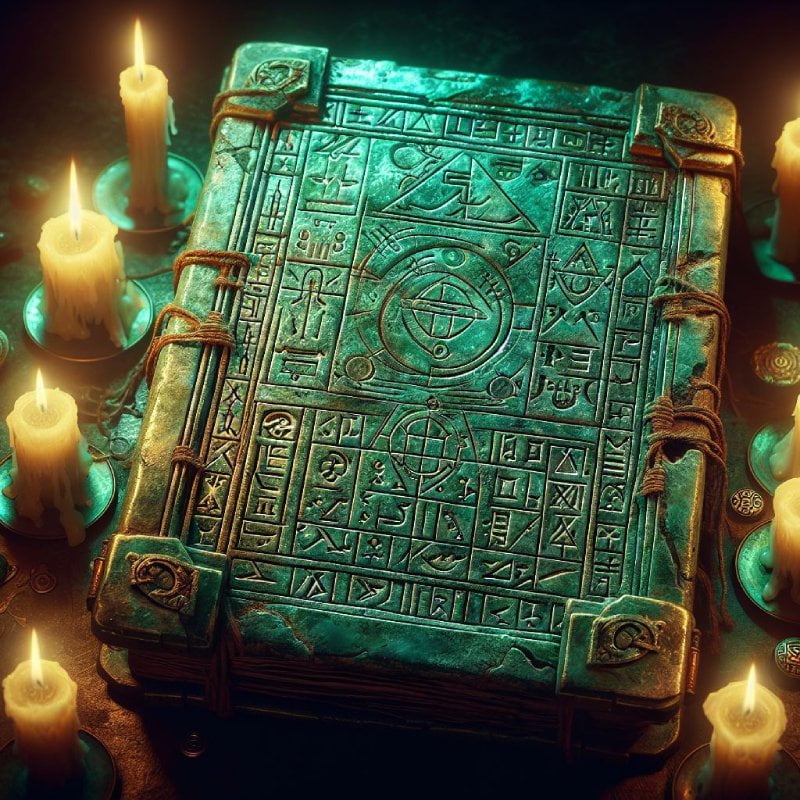
At first glance, these spiritual traditions might appear as disparate streams flowing from distinct sources. Yet, when we peer deeper, beyond the surface of rituals and dogmas, a fascinating dialogue emerges—one of similarities and divergences, of historical interweavings and theological nuances. Exploring ‘Kabbalah and Catholicism’ reveals the rich tapestry of spiritual traditions that have shaped our understanding of the divine. he comparative study of ‘Kabbalah and Catholicism’ offers unique insights into the core doctrines that underpin these ancient belief systems. Mystical practices in ‘Kabbalah and Catholicism’ serve as gateways to experiencing a deeper connection with the divine. This article invites you on a journey to explore the historical roots and development of these rich traditions, to uncover the core doctrines that define and differentiate them, and to delve into their mystical practices that seek to touch the hem of the Infinite.
Whether you are a seeker of hidden knowledge, a student of comparative religion, or simply curious about the ways in which different faiths approach the ultimate questions of existence, “Kabbalah and Catholicism” offers a path to deeper understanding. Here, we embark on an exploration of spiritual depth, seeking to uncover how two of the world’s enduring religious traditions converge and diverge in their quest for the divine.
Tracing the Spiritual Lineages
Kabbalah’s Ancient Beginnings
Kabbalah, often perceived as the mystical dimension of the Hebrew Scriptures, has its roots deeply embedded in the esoteric interpretations that began to flourish significantly in the 12th century (1). Originating in the communities of Provence, France, and later flourishing in Spain, Kabbalah provides a mystical framework intended to reveal the inner meanings of sacred texts and the nature of life, the universe, and everything. Central to Kabbalah is the Tree of Life, a complex symbol representing the ten divine emanations or ‘sefirot’ (Sephiroth) through which the Infinite interacts with the world.
The Sephiroth are ten emanations which represent the process of creation and the nature of the divine, forming a tree of life structure (2).
Catholicism’s Formative Epochs
Catholicism, with its genesis in the teachings and life of Jesus Christ and the apostolic traditions, was systematized within the framework of Roman authority. It grew to prominence as the state religion under Emperor Constantine in the 4th century. This period marked the beginning of doctrinal codification, seen in the Nicene Creed, which laid down the foundational beliefs about the nature of Christ and the Trinity – a doctrine defining God as one essence in three coeternal persons.
Philosophical and Theological Exchanges
Both Kabbalah and Catholicism have navigated through the intellectual currents of their times, integrating and responding to Greek philosophical thought, particularly Platonism and Aristotelianism. This intellectual engagement led Kabbalah to elaborate on the dynamic between the sefirot and the metaphysical structures of the universe, whereas Catholicism focused on articulating the nature of sacraments and the theology of grace and salvation, incorporating Aristotelian metaphysics to explain the real presence in the Eucharist.
Mutual Influences and Divergent Paths
Despite their different origins, Kabbalah and Catholicism occasionally intersected in the medieval period, particularly during the Renaissance when Kabbalists and Christian scholars sought common ground to understand the divine. The Zohar, Kabbalah’s foundational text, introduced ideas that fascinated many Christian thinkers, such as Giovanni Pico della Mirandola, who attempted to reconcile Kabbalistic concepts with Christian theology.
The Zohar is a midrash on the Torah, a Kabbalistic teaching, and a key source for understanding the Jewish people, exile, and Messiah (3).
Unveiling Core Spiritual Doctrines
Divine Manifestations: Sefirot vs. Trinity
The doctrine of the sefirot in Kabbalah outlines the ten emanations through which the Infinite reveals and continuously creates both the physical and metaphysical realms. These emanations, unlike anything in material religion, depict the multifaceted nature of the divine flow and its impact on existence. In contrast, the Trinity in Catholicism—comprising the Father, the Son, and the Holy Spirit—describes three distinct persons of one divine essence, focusing on their interrelationship and roles within the divine economy of salvation.
Concepts of Sin and Restoration
Kabbalah views sin as a disruption of cosmic harmony, addressable through ‘Tikkun’—a restoration achieved by human actions that realign the divine sparks with their source. This is a personal and cosmic healing process, reflecting a dynamic and ongoing creation. Alternatively, Catholicism presents sin primarily through the lens of Original Sin, a fundamental breach repaired by Christ’s sacrifice, emphasizing a more static and completed act of redemption accessible through the sacraments.
Mystical Approaches to Divine Communion
Meditative practices in Kabbalah involve ascending the pathways between the sefirot, aiming to understand and experience the divine structure of the cosmos. This personal spiritual ascent seeks to enhance the practitioner’s spiritual wisdom and alignment with divine will. Catholicism employs liturgical and sacramental practices, particularly the Mass, as a communal participation in Christ’s sacrifice, which is believed to confer the grace necessary for salvation and divine union.
Integration with Universal Truths
Both traditions, in their doctrinal cores, strive to articulate a comprehensive understanding of the universe and human purpose within it. Kabbalah uses the Tree of Life to map out the journey of the soul and the structure of reality, while Catholicism uses the schema of creation, fall, redemption, and glorification to outline the human journey towards divine likeness.
Paths to Mystical Enlightenment
Meditative and Contemplative Paradigms
In Kabbalah, meditation is not merely a practice but a profound engagement with the symbols and names that compose the spiritual universe. This form of meditation often involves intricate visualizations of the sefirot and recitations of divine names, intended to bring about spiritual insights and a closer communion with the divine aspects of reality. These practices are designed to transform the practitioner’s consciousness, allowing them to perceive and enact the divine law in everyday life.
Contemplative Practices in Catholicism
Catholicism offers contemplative prayer as a means to encounter God directly, beyond the sensory experiences of formal ritual. Practices such as the Rosary, the Stations of the Cross, and Eucharistic adoration are designed to foster a personal experience of Christ’s life, death, and resurrection, deepening the believer’s relationship with God through reflective and meditative engagement with sacred realities.
The Goal of Mystical Practices
Both Kabbalah and Catholicism view their mystical practices as essential to spiritual growth and ultimate union with the divine. In Kabbalah, this is seen in the aspiration to return to Ein Sof, the endless source of all reality, through the rectification of the soul and the world. In Catholicism, mystical practice aims at the beatific vision, a direct and intuitive grasp of God, promised as the ultimate fulfillment of human destiny. The dialogue between ‘Kabbalah and Catholicism’ enriches our spiritual journey, offering paths to enlightenment grounded in centuries of wisdom.
Cross-Cultural Influences and Synthesis
Throughout history, Kabbalah and Catholic mystical practices have occasionally converged, as seen in the Christian Kabbalah movement, which sought to integrate Kabbalistic symbols into Christian mysticism. Such syntheses illustrate the dynamic interplay between these traditions, highlighting their shared pursuit of divine wisdom and transformative spiritual experience.
Conclusion
In the contemplative shadows where Kabbalah and Catholicism converge, we find a profound narrative of spiritual inquiry and divine interaction. This exploration has revealed that both traditions, while rooted in distinct historical and theological grounds, offer rich, mystical paths designed to deepen the human understanding of the divine and enhance our spiritual journey.
Kabbalah and Catholicism, despite their apparent differences in doctrine and practice, share a fundamental aim: to bridge the human with the divine. Kabbalah does this through the intricate mappings of the sefirot and the mystical meditations on the divine emanations, facilitating a personal ascent towards cosmic harmony. Catholicism, conversely, uses the sacramental system and the meditative prayer of the Rosary or the Stations of the Cross to cultivate a communal and personal sanctification, aiming at union with the divine essence through Christ.
Through ‘Kabbalah and Catholicism,’ seekers and scholars alike uncover the mysteries of faith and the pursuit of divine knowledge. Each tradition enriches the spiritual discourse with unique insights: Kabbalah introduces the concept of Tikkun, emphasizing the active role of humans in the restoration of the world, while Catholicism presents a comprehensive view of salvation history, centered on the pivotal act of redemption through Jesus Christ. These contributions not only highlight their spiritual depth but also their potential to inform each other through comparative theological and mystical studies.
Dive Into the Depths of Spiritual Practice and Theory
To continue exploring these rich spiritual landscapes, consider joining the Hermetic Academy. Here, you will find resources, courses, and a community of like-minded individuals dedicated to understanding the mystical traditions of the world, including deeper understanding of Kabbalah and Catholicism.
FAQ – Kabbalah and Catholicism
1. What are the profound distinctions between Kabbalah and Catholicism?
A: Behold the esoteric framework of Kabbalah, which unveils the universe’s secrets through the divine emanations known as the sefirot, charting the celestial energies’ sacred flow. In stark contrast, the venerable edifice of Catholicism is built upon the Trinity’s mystery, focusing devoutly on the teachings and salvific mission of Christ Jesus, orchestrating the faithful’s journey towards sanctification and divine communion via the sacramental rites of the Church.
2. How do Kabbalah and Catholicism perceive sin and the path to redemption?
A: In the mystical realm of Kabbalah, sin manifests as an obstruction within the divine luminosity flowing through the sefirot, a misalignment mendable by acts of Tikkun—rituals of restoration that realign the soul with the divine will. Contrastingly, Catholic doctrine proclaims sin as an intrinsic flaw of human nature, redeemable only through the sacrificial passion and glorious resurrection of Jesus Christ. This sacred redemption is graciously dispensed to the faithful through the holy sacraments.
3. Is it feasible to follow Kabbalah whilst devoutly practicing Catholicism?
A: To intertwine the practices of Kabbalah with the devout rituals of Catholicism is to walk a labyrinthine path, fraught with profound theological divergences. Yet, for those seekers who venture to synthesize these spiritualities, such integration may indeed illuminate the mystical undercurrents of Catholic dogma and enrich one’s spiritual voyage. This pursuit demands a deep and respectful understanding of both traditions to preserve one’s spiritual integrity and theological coherence.
4: What are the mystic practices common to Kabbalah and Catholicism?
A: The adepts of Kabbalah engage in meditative disciplines, contemplating the divine sefirot and uttering sacred names to ascend to heightened states of spiritual awareness. Meanwhile, the mystics of Catholicism devote themselves to contemplative orisons, like the Rosary or the meditative journey of the Stations of the Cross, seeking a profound communion with the Divine through Christ.
5. Whence can one delve deeper into the studies of Kabbalah and Catholicism conjoined?
A: Those souls enraptured by the call to deeply explore both Kabbalah and Catholicism may find solace and wisdom at the Hermetic Academy. This sanctum offers a plethora of courses and resources that dissect these spiritual traditions with meticulous scholarship, designed to foster an enriching dialogue amongst acolytes from manifold walks of life.
References
(1) Rubenstein, E. (2020). The Tree of Life: The Kabbalah of Immortality. Hermetic World, Paphos.
(2) Mathers, S. L. M. (1887). The Kabbalah Unveiled. London: George Redway.
(3) Green, A. (2003). A Guide to the Zohar. . https://doi.org/10.5860/choice.41-6473.

